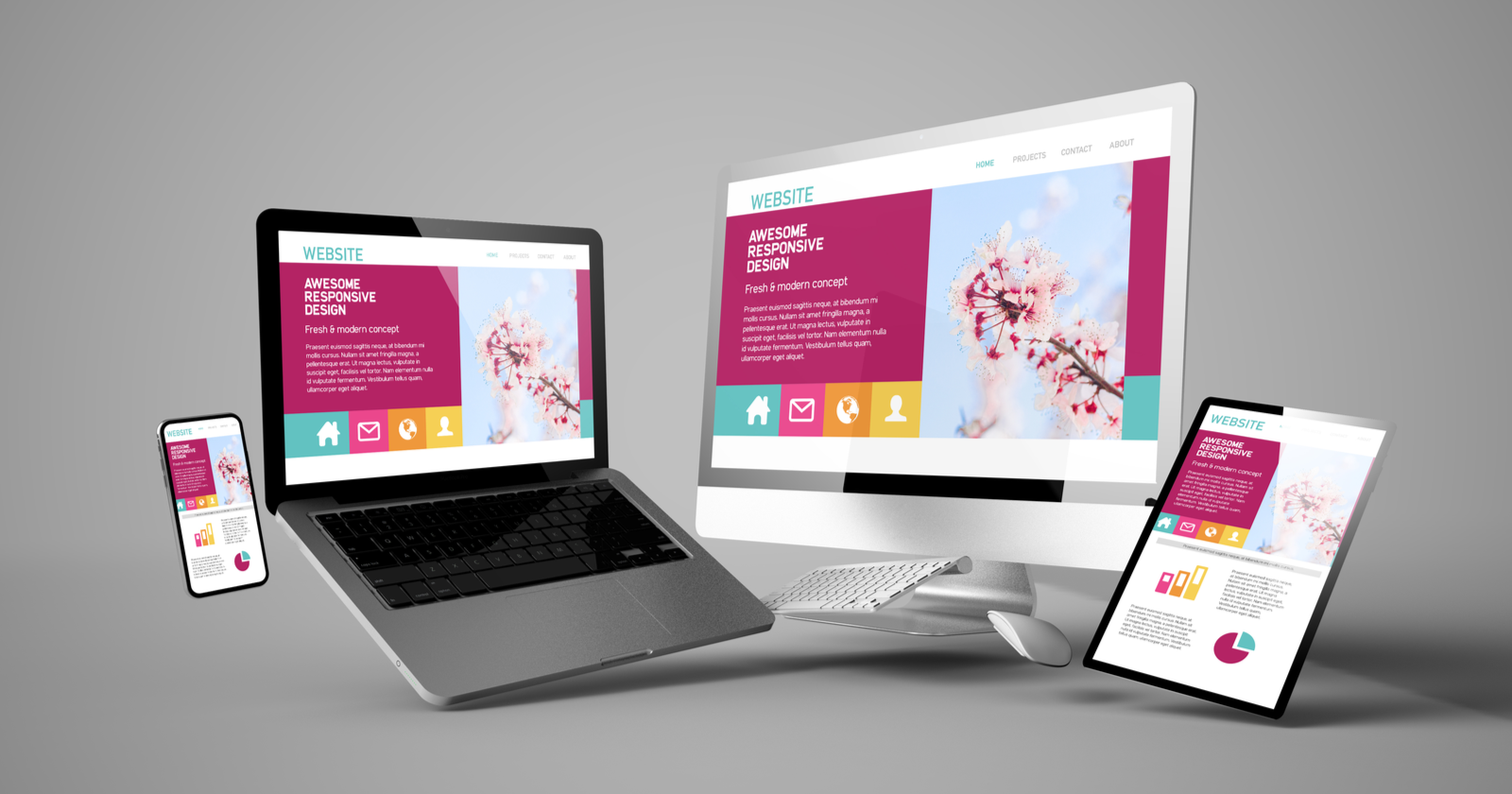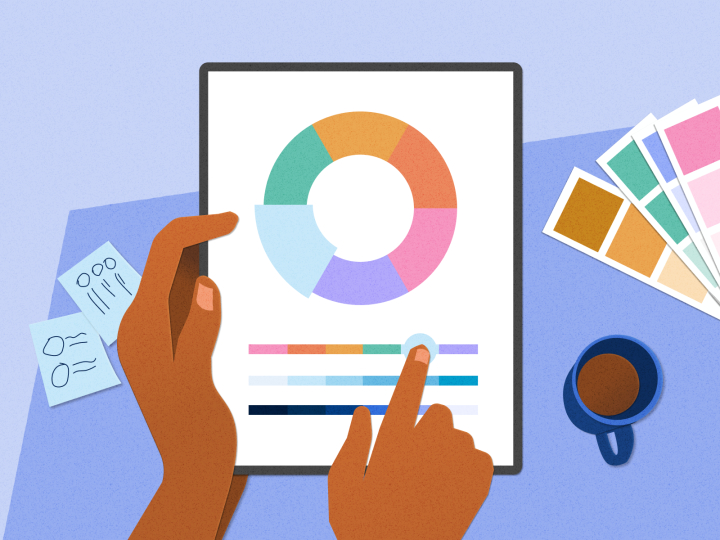The Comprehensive Guide to Crafting Aesthetically Appealing and Practical Web Style That Meets Customer Requirements
In today's electronic landscape, the importance of crafting internet layouts that are both visually attractive and functional can not be overemphasized. By focusing on user-centered design concepts, developers can produce experiences that not only bring in however also keep individual passion - web design.
Understanding User-Centered Style
At the heart of effective website design exists the concept of user-centered design, a viewpoint that focuses on the requirements, preferences, and behaviors of customers throughout the growth procedure. This approach includes detailed research to recognize the target market, making sure that the end product reverberates with its desired users. By integrating individual feedback at every stage, designers can develop interfaces that are not just visually attractive but intuitive and likewise functional.
User-centered layout emphasizes empathy, calling for developers to enter the individuals' shoes and consider their viewpoints. Methods such as user personalities, journey mapping, and usability screening are utilized to recognize discomfort factors and opportunities for enhancement. This repetitive process permits for consistent improvement, as designers adapt to developing customer needs and technological innovations.
Incorporating user-centered design leads to enhanced customer contentment and engagement, ultimately resulting in greater conversion prices and brand name commitment. It fosters a collaborative setting where stakeholders, including developers, programmers, and individuals, collaborate to accomplish a shared vision. By positioning customers at the center of the design procedure, organizations can create web sites that not just satisfy company purposes however likewise provide satisfying and significant experiences for customers.
Secret Concepts of Visual Layout
Effective visual layout works as the structure for developing user-friendly and engaging sites. It includes several essential principles that guide developers in crafting visually pleasing and useful interfaces.
First, equilibrium plays an essential function in achieving visual harmony. Developers need to distribute components equally throughout the layout to stay clear of frustrating individuals. This can be achieved with symmetrical or unbalanced design methods.
Following, contrast improves readability and attracts attention to important elements. By making use of varying sizes, forms, or shades, designers can create centerpieces that direct individuals via the content.
Furthermore, positioning is necessary for organizing info. Consistent alignment of message and images fosters a clean layout, enhancing overall navigating and user experience.
Closeness additionally contributes to visual clarity. Grouping related things with each other aids customers in comprehending the relationship between various aspects, making the user interface extra user-friendly.
Finally, uniformity in design components, such as designs, colors, and font styles, reinforces brand name identification and aids users navigate the site extra effortlessly. By incorporating these essential concepts of aesthetic style, internet developers can produce user interfaces that are not only visually appealing however user-centered and additionally useful.
Importance of Responsive Layout
Receptive layout is a crucial aspect of modern-day internet advancement, guaranteeing that internet sites function effortlessly across a selection of gadgets and screen sizes. As the net landscape advances, the variety of devicesâEUR" ranging from mobile phones to tablets and desktop computersâEUR" demands a style approach that accommodates all customers.
Implementing receptive style permits a versatile layout that instantly adapts based upon the user's screen dimensions. This flexibility not just check my source boosts ease of access however likewise boosts use, as customers can connect and browse with the site easily, no matter of their gadget.

Furthermore, responsive style reduces the demand for keeping numerous variations of a site, simplifying updates and material monitoring. This effectiveness translates right into expense financial savings and an extra natural brand experience throughout systems.
Enhancing Customer Experience
Individual experience (UX) is an essential part of internet style, affecting how visitors interact with a website and view its worth. A well-crafted UX guarantees that users can browse without effort, find details easily, and achieve their objectives successfully. The design should think about the customer's trip, from the moment they arrive on the site to the completion of their desired action, whether that be purchasing, registering for he said an e-newsletter, or accessing info.
Secret aspects that enhance UX include clear navigation, receptive formats, and engaging visual material. Consistency in layout elements such as shades, fonts, and switches fosters knowledge, making the website really feel cohesive. Additionally, optimizing lots times is critical; individuals are much less likely to stay on a site that is sluggish to respond.

Testing and Iterating Styles
Examining and repeating styles are fundamental processes check out here that follow the initial development of an internet site, making sure that the individual experience remains at the center of any adjustments. These phases involve collecting individual feedback, evaluating design efficiency, and making notified adjustments to boost usability and involvement.
Functionality screening permits designers to observe real customers as they connect with the website, recognizing discomfort points and areas for enhancement. Individual studies can supply qualitative understandings, catching user beliefs and choices.
Continuous model fosters an adaptive design method, where the website advances in action to user habits and comments. By dedicating to rigorous screening and iteration, developers can create a web site that not just fulfills aesthetic criteria however likewise supplies a delightful and seamless customer experience.

Verdict
In verdict, effective web layout necessitates the assimilation of user-centered concepts, key visual layout components, and receptive structures to produce appealing user interfaces. By prioritizing user requirements and carrying out continual screening and iteration, developers can improve their developments to boost general fulfillment. The commitment to these techniques not only cultivates an aesthetically attractive visual however likewise makes sure performance across varied tools, ultimately adding to a positive user experience and increased interaction.
By focusing on user-centered layout concepts, designers can create experiences that not just draw in but likewise preserve individual interest.At the heart of reliable web layout lies the concept of user-centered design, a viewpoint that focuses on the demands, preferences, and habits of users throughout the growth process. By positioning individuals at the center of the style procedure, companies can create internet sites that not just meet service goals but additionally supply meaningful and fulfilling experiences for individuals.
By focusing on user requirements and choices, web developers can create experiences that are not only visually attractive however additionally functional, ultimately cultivating user contentment and loyalty.
Individual studies can provide qualitative insights, catching individual views and choices.